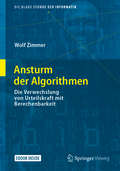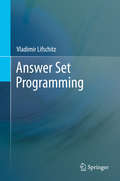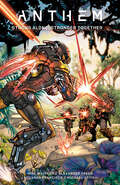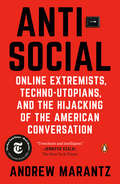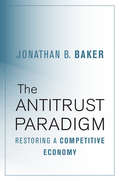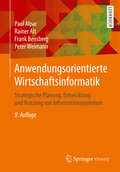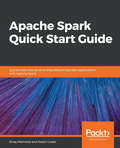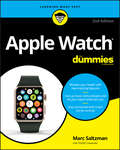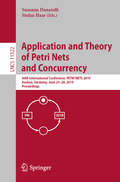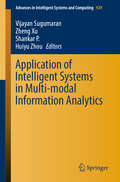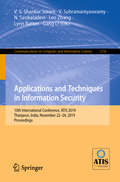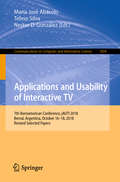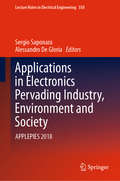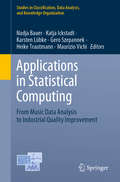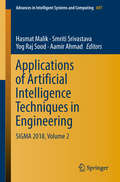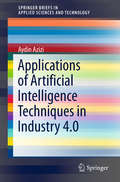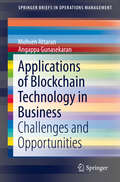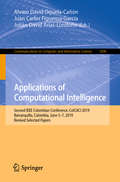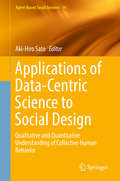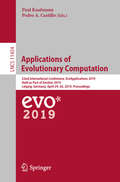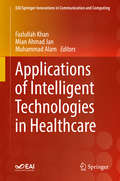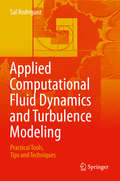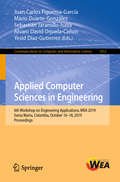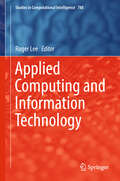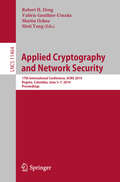- Table View
- List View
Ansturm der Algorithmen: Die Verwechslung von Urteilskraft mit Berechenbarkeit (Die blaue Stunde der Informatik)
by Wolf ZimmerDer durch die „Blumenkinder“ des Silicon Valley entfesselte digitale Rausch droht, die Vernunft durch den Aberglauben zu ersetzen, man könne die Welt rechnend vervollkommnen. Wer aber glaubt, die Probleme einer ungewissen Welt mit technologischen Gewissheiten lösen zu können, hat weder etwas von der Welt noch etwas von der Technologie verstanden. Im digitalen Sittenbild aus Silizium und Statistik ersetzt Rechnen das Denken, Wahrscheinlichkeit wird für Wahrheit ausgegeben und Korrelation verdrängt Kausalität. Die Hohepriester der Digitalisierung fragen nicht, ob wir das, was sie verkünden, für gut und richtig halten. Gut und richtig sind keine Kategorien des Digitalen.
Answer Set Programming
by Vladimir LifschitzAnswer set programming (ASP) is a programming methodology oriented towards combinatorial search problems. In such a problem, the goal is to find a solution among a large but finite number of possibilities. The idea of ASP came from research on artificial intelligence and computational logic. ASP is a form of declarative programming: an ASP program describes what is counted as a solution to the problem, but does not specify an algorithm for solving it. Search is performed by sophisticated software systems called answer set solvers.Combinatorial search problems often arise in science and technology, and ASP has found applications in diverse areas—in historical linguistic, in bioinformatics, in robotics, in space exploration, in oil and gas industry, and many others. The importance of this programming method was recognized by the Association for the Advancement of Artificial Intelligence in 2016, when AI Magazine published a special issue on answer set programming. The book will introduce the reader to the theory and practice of ASP. It will describe the input language of the answer set solver CLINGO, which was designed at the University of Potsdam in Germany and is used today by ASP programmers in many countries. It will include numerous examples of ASP programs and present the mathematical theory that ASP is based on. There will be many exercises with complete solutions.
Anthem: Strong Alone, Stronger Together
by Bioware Alexander Freed Mac WaltersThis prequel to BioWare's science fantasy Action RPG introduces two gifted siblings struggling for survival in a world full of danger.From the video game developer that has defined roleplaying games with seminal franchises such as Mass Effect, Dragon Age, Baldur's Gate, and Star Wars: Knights of the Old Republic comes a world brimming with new heroes, new threats, and new stories. Yarrow--one of the brave warriors known as Freelancers who pilot powerful Javelin exosuits--rescues a lone boy, Kismet, from an ambush. With no family left alive, Kismet is placed with a family in Fort Tarsis, a human outpost surrounded by untamed wilderness. His adoptive sister, Jani, struggles with Kismet's withdrawn personality at first, but over the years, the two become close friends. As they grow, Jani learns to fly and fight in Javelin armor, while Kismet trains to join the ranks of the mysterious Cyphers. The pair find themselves split, each pursuing their own craft of war, until an enemy force--large and vicious--appears on the horizon, bringing them together to face their ultimate test. They vowed to defend humanity, but can they protect each other?
Antisocial: Online Extremists, Techno-Utopians, and the Hijacking of the American Conversation
by Andrew MarantzFrom a rising star at The New Yorker, a deeply immersive chronicle of how the optimistic entrepreneurs of Silicon Valley set out to create a free and democratic internet--and how the cynical propagandists of the alt-right exploited that freedom to propel the extreme into the mainstream. <P><P>For several years, Andrew Marantz, a New Yorker staff writer, has been embedded in two worlds. The first is the world of social-media entrepreneurs, who, acting out of naïvete and reckless ambition, upended all traditional means of receiving and transmitting information. The second is the world of the people he calls "the gate crashers"--the conspiracists, white supremacists, and nihilist trolls who have become experts at using social media to advance their corrosive agenda. <P><P>Antisocial ranges broadly--from the first mass-printed books to the trending hashtags of the present; from secret gatherings of neo-Fascists to the White House press briefing room--and traces how the unthinkable becomes thinkable, and then how it becomes reality. Combining the keen narrative detail of Bill Buford's Among the Thugs and the sweep of George Packer's The Unwinding, Antisocial reveals how the boundaries between technology, media, and politics have been erased, resulting in a deeply broken informational landscape--the landscape in which we all now live. <P><P>Marantz shows how alienated young people are led down the rabbit hole of online radicalization, and how fringe ideas spread--from anonymous corners of social media to cable TV to the President's Twitter feed. Marantz also sits with the creators of social media as they start to reckon with the forces they've unleashed. Will they be able to solve the communication crisis they helped bring about, or are their interventions too little too late?
The Antitrust Paradigm: Restoring a Competitive Economy
by Jonathan B. BakerAt a time when tech giants have amassed vast market power, Jonathan Baker shows how laws and regulations can be updated to ensure more competition. The sooner courts and antitrust enforcement agencies stop listening to the Chicago school and start paying attention to modern economics, the sooner Americans will reap the benefits of competition.
Anwendungsorientierte Wirtschaftsinformatik: Strategische Planung, Entwicklung und Nutzung von Informationssystemen
by Paul Alpar Rainer Alt Frank Bensberg Peter WeimannLernen Sie die anwendungsorientierte Seite der Wirtschaftsinformatik kennen Wo kommen Informationstechnologien in Gesellschaft und Wirtschaft zum Einsatz? Dieses Lehrbuch liefert eine ganzheitliche und praxisbezogene Antwort. Die Autoren erläutern die Bedeutung von Informationssystemen in Unternehmen. Erfahren Sie, welche Aufgaben das Informationsmanagement erfüllt und wie Sie solche Systeme planen und steuern. Im Vordergrund des Lehrbuchs der Wirtschaftsinformatik stehen verschiedene Aspekte der digitalen Transformation, wie etwa: • Electronic Business • Mobile Business • Social Media und Web 2.0 • Internet der Dinge, M2M und Industrie 4.0 Neben praxisorientierten Gestaltungsansätzen der Digitalisierung auf Strategie-, Organisations- und Informationssystemebene stellen Ihnen die Autoren verschiedene betriebliche Anwendungssysteme (vor dem Hintergrund „Big Data“) vor und widmen sich der anwendungsorientierten Softwareentwicklung. Klar veranschaulichte Sachverhalte Die zahlreichen Beispiele, Tabellen und Grafiken erleichtern das Verständnis der komplexen Inhalte und machen dieses Lehrbuch zu einem hilfreichen Werkzeug für die angewandte Wirtschaftsinformatik. Nutzen Sie es in der Kommunikationstechnologie oder für die Entwicklung einer Softwarearchitektur. Dank seiner zahlreichen Einsatzmöglichkeiten ist dieses Buch eine echte Bereicherung – nicht nur für Studenten der Wirtschaftsinformatik, sondern auch für Praktiker wie Ingenieure in der IT oder verwandten Fachabteilungen.
Apache Spark Quick Start Guide: Quickly learn the art of writing efficient big data applications with Apache Spark
by Shrey Mehrotra Akash GradeA practical guide for solving complex data processing challenges by applying the best optimizations techniques in Apache Spark. Key Features Learn about the core concepts and the latest developments in Apache Spark Master writing efficient big data applications with Spark's built-in modules for SQL, Streaming, Machine Learning and Graph analysis Get introduced to a variety of optimizations based on the actual experience Book Description Apache Spark is a flexible framework that allows processing of batch and real-time data. Its unified engine has made it quite popular for big data use cases. This book will help you to get started with Apache Spark 2.0 and write big data applications for a variety of use cases. It will also introduce you to Apache Spark – one of the most popular Big Data processing frameworks. Although this book is intended to help you get started with Apache Spark, but it also focuses on explaining the core concepts. This practical guide provides a quick start to the Spark 2.0 architecture and its components. It teaches you how to set up Spark on your local machine. As we move ahead, you will be introduced to resilient distributed datasets (RDDs) and DataFrame APIs, and their corresponding transformations and actions. Then, we move on to the life cycle of a Spark application and learn about the techniques used to debug slow-running applications. You will also go through Spark's built-in modules for SQL, streaming, machine learning, and graph analysis. Finally, the book will lay out the best practices and optimization techniques that are key for writing efficient Spark applications. By the end of this book, you will have a sound fundamental understanding of the Apache Spark framework and you will be able to write and optimize Spark applications. What you will learn Learn core concepts such as RDDs, DataFrames, transformations, and more Set up a Spark development environment Choose the right APIs for your applications Understand Spark's architecture and the execution flow of a Spark application Explore built-in modules for SQL, streaming, ML, and graph analysis Optimize your Spark job for better performance Who this book is for If you are a big data enthusiast and love processing huge amount of data, this book is for you. If you are data engineer and looking for the best optimization techniques for your Spark applications, then you will find this book helpful. This book also helps data scientists who want to implement their machine learning algorithms in Spark. You need to have a basic understanding of any one of the programming languages such as Scala, Python or Java.
Apple Watch For Dummies
by Marc SaltzmanTake a bite out of the new and improved Apple Watch! The Apple Watch is a powerful computer that’s worn on your wrist — and can serve as an invaluable companion, anytime and anywhere. Acting as a communication device, fitness and health tracker, and sleek time piece, the Apple Watch keeps you connected —and all hands-free. Apple Watch For Dummies gets you up to speed on the latest updates to WatchOS, and teaches you about all-new features, such as the walkie-talkie. You’ll find out how to use it to set and maintain reachable goals for your fitness; monitor your heart rate, detect falls, and track other health-related info; send and receive text messages and emails; use Siri; get directions in real-time; learn about the best apps for work and play; and much, much more! Find tips for picking a watch model Get watch basics for newbies Adjust the settings Learn about the hottest apps Troubleshoot common issues Wrap your head around WatchOS 5 and the updated Apple Watch, even as it wraps around your wrist!
Application and Theory of Petri Nets and Concurrency: 40th International Conference, PETRI NETS 2019, Aachen, Germany, June 23–28, 2019, Proceedings (Lecture Notes in Computer Science #11522)
by Susanna Donatelli Stefan HaarThis book constitutes the proceedings of the 40th International Conference on Application and Theory of Petri Nets and Concurrency, PETRI NETS 2019, held in Aachen, Germany, , in June 2018. Petri Nets 2019 is co-located with the 19th International Conference on Application of Concurrency to System Design, ACSD 2019.The 23 regular and 3 invited papers presented together in this volume were carefully reviewed and selected from 41 submissions. The focus of the conference is on following topics: Models, Tools, Synthesis, Semantics, Concurrent Processes, Algorithmic Aspects, Parametrics and Combinatorics, and Models with Extensions.
Application of Intelligent Systems in Multi-modal Information Analytics (Advances in Intelligent Systems and Computing #929)
by Vijayan Sugumaran Zheng Xu Shankar P. Huiyu ZhouThis book presents the proceedings of the 2019 International Conference on Intelligent Systems Applications in Multi-modal Information Analytics, held in Shenyang, China on February 19-20, 2019. It provides comprehensive coverage of the latest advances and trends in information technology, science and engineering, addressing a number of broad themes, including data mining, multi-modal informatics, agent-based and multi-agent systems for health and education informatics, which inspire the development of intelligent information technologies. The contributions cover a wide range of topics: AI applications and innovations in health and education informatics; data and knowledge management; multi-modal application management; and web/social media mining for multi-modal informatics. Outlining promising future research directions, the book is a valuable resource for students, researchers and professionals, and provides a useful reference guide for newcomers to the field.
Applications and Techniques in Information Security: 10th International Conference, ATIS 2019, Thanjavur, India, November 22–24, 2019, Proceedings (Communications in Computer and Information Science #1116)
by V. S. Shankar Sriram V. Subramaniyaswamy N. Sasikaladevi Leo Zhang Lynn Batten Gang LiThis book constitutes the refereed proceedings of the 10th International Conference on Applications and Techniques in Information Security, ATIS 2019, held in Tamil Nadul, India, in November 2019.The 22 full papers and 2 short papers presented in the volume were carefully reviewed and selected from 50 submissions. The papers are organized in the following topical sections: information security; network security; intrusion detection system; authentication and key management system; security centric applications.
Applications and Usability of Interactive TV: 7th Iberoamerican Conference, jAUTI 2018, Bernal, Argentina, October 16–18, 2018, Revised Selected Papers (Communications in Computer and Information Science #1004)
by María José Abásolo Telmo Silva Nestor D. GonzálezThis book constitutes the refereed proceedings of the 7th Iberoamerican Conference on Applications and Usability of Interactive Television, jAUTI 2018, in Bernal, Argentina, in October 2018.The 13 full papers presented were carefully reviewed and selected from numerous submissions. The papers are organized in topical sections on Contexts of application of the IDTV; Design and Implementation Techniques of IDTV Content and Services; Interaction Techniques, Technologies and Accesibility of IDTV Services; Testing and User Experience of IDTV Services.
Applications in Electronics Pervading Industry, Environment and Society: APPLEPIES 2018 (Lecture Notes in Electrical Engineering #550)
by Alessandro De Gloria Sergio SaponaraThis book provides a thorough overview of cutting-edge research on electronics applications relevant to industry, the environment, and society at large. It covers a broad spectrum of application domains, from automotive to space and from health to security, while devoting special attention to the use of embedded devices and sensors for imaging, communication and control. The book is based on the 2018 ApplePies Conference, held in Pisa, Italy in September 2018, which brought together researchers and stakeholders to consider the most significant current trends in the field of applied electronics and to debate visions for the future. Areas addressed by the conference included information communication technology; biotechnology and biomedical imaging; space; secure, clean and efficient energy; the environment; and smart, green and integrated transport. As electronics technology continues to develop apace, constantly meeting previously unthinkable targets, further attention needs to be directed toward the electronics applications and the development of systems that facilitate human activities. This book, written by industrial and academic professionals, represents a valuable contribution in this endeavor.
Applications in Statistical Computing: From Music Data Analysis to Industrial Quality Improvement (Studies in Classification, Data Analysis, and Knowledge Organization)
by Nadja Bauer Katja Ickstadt Karsten Lübke Gero Szepannek Heike Trautmann Maurizio VichiThis volume presents a selection of research papers on various topics at the interface of statistics and computer science. Emphasis is put on the practical applications of statistical methods in various disciplines, using machine learning and other computational methods. The book covers fields of research including the design of experiments, computational statistics, music data analysis, statistical process control, biometrics, industrial engineering, and econometrics. Gathering innovative, high-quality and scientifically relevant contributions, the volume was published in honor of Claus Weihs, Professor of Computational Statistics at TU Dortmund University, on the occasion of his 66th birthday.
Applications of Artificial Intelligence Techniques in Engineering: SIGMA 2018, Volume 2 (Advances in Intelligent Systems and Computing #697)
by Hasmat Malik Smriti Srivastava Yog Raj Sood Aamir AhmadThe book is a collection of high-quality, peer-reviewed innovative research papers from the International Conference on Signals, Machines and Automation (SIGMA 2018) held at Netaji Subhas Institute of Technology (NSIT), Delhi, India. The conference offered researchers from academic and industry the opportunity to present their original work and exchange ideas, information, techniques and applications in the field of computational intelligence, artificial intelligence and machine intelligence. The book is divided into two volumes discussing a wide variety of industrial, engineering and scientific applications of the emerging techniques.
Applications of Artificial Intelligence Techniques in Industry 4.0 (SpringerBriefs in Applied Sciences and Technology)
by Aydin AziziThis book is to presents and evaluates a way of modelling and optimizing nonlinear RFID Network Planning (RNP) problems using artificial intelligence techniques. It uses Artificial Neural Network models (ANN) to bind together the computational artificial intelligence algorithm with knowledge representation an efficient artificial intelligence paradigm to model and optimize RFID networks.This effort leads to proposing a novel artificial intelligence algorithm which has been named hybrid artificial intelligence optimization technique to perform optimization of RNP as a hard learning problem. This hybrid optimization technique consists of two different optimization phases. First phase is optimizing RNP by Redundant Antenna Elimination (RAE) algorithm and the second phase which completes RNP optimization process is Ring Probabilistic Logic Neural Networks (RPLNN). The hybrid paradigm is explored using a flexible manufacturing system (FMS) and the results are compared with well-known evolutionary optimization technique namely Genetic Algorithm (GA) to demonstrate the feasibility of the proposed architecture successfully.
Applications of Blockchain Technology in Business: Challenges and Opportunities (SpringerBriefs in Operations Management)
by Mohsen Attaran Angappa GunasekaranThe book discusses the various ways that blockchain technology is changing the future of money, transactions, government, and business. The first two chapters walk through the foundation of blockchain. Chapters 3–12 look at applications of blockchain in different industries and highlight its exciting new business applications. It show why so many companies are implementing blockchain, and present examples of companies who have successfully employed the technology to improve efficiencies and reduce costs. Chapter 13 highlights blockchain’s powerful potential to foster emerging markets and economies including smart cities, value-based healthcare, decentralized sharing economy, machine to machine transactions, data-sharing marketplace, etc. Chapter 14 offers a conceptual model, provides information and insights, and covers a step-by-step approach to plan and develop blockchain-based technology.
Applications of Computational Intelligence: Second IEEE Colombian Conference, ColCACI 2019, Barranquilla, Colombia, June 5-7, 2019, Revised Selected Papers (Communications in Computer and Information Science #1096)
by Alvaro David Orjuela-Cañón Juan Carlos Figueroa-García Julián David Arias-LondoñoThis book constitutes the thoroughly refereed proceedings of the Second IEEE Colombian Conference, ColCACI 2019, held in Barranquilla, Colombia, in June 2019. The 21 full papers presented were carefully reviewed and selected from 59 submissions. The papers cover such topics as video processing; biomedical systems; image processing, etc.
Applications of Data-Centric Science to Social Design: Qualitative and Quantitative Understanding of Collective Human Behavior (Agent-Based Social Systems #14)
by Aki-Hiro SatoThe intention behind this book is to illustrate the deep relation among human behavior, data-centric science, and social design. In fact, these three issues have been independently developing in different fields, although they are, of course, deeply interrelated to one another. Specifically, fundamental understanding of human behavior should be employed for investigating our human society and designing social systems. Insights and both quantitative and qualitative understandings of collective human behavior are quite useful when social systems are designed. Fundamental principles of human behavior, theoretical models of human behavior, and information cascades are addressed as aspects of human behavior. Data-driven investigation of human nature, social behavior, and societal systems are developed as aspects of data-centric science. As design aspects, how to design social systems from heterogeneous memberships is explained. There is also discussion of these three aspects—human behavior, data-centric science, and social design—independently and with regard to the relationships among them.
Applications of Evolutionary Computation: 22nd International Conference, EvoApplications 2019, Held as Part of EvoStar 2019, Leipzig, Germany, April 24–26, 2019, Proceedings (Lecture Notes in Computer Science #11454)
by Paul Kaufmann Pedro A. CastilloThis book constitutes the refereed proceedings of the 22nd International Conference on Applications of Evolutionary Computation, EvoApplications 2019, held in Leipzig, Germany, in April 2019, co-located with the Evo*2019 events EuroGP, EvoCOP and EvoMUSART. The 44 revised full papers presented were carefully reviewed and selected from 66 submissions. They were organized in topical sections named: Engineering and Real World Applications; Games; General; Image and Signal Processing; Life Sciences; Networks and Distributed Systems; Neuroevolution and Data Analytics; Numerical Optimization: Theory, Benchmarks, and Applications; Robotics.
Applications of Intelligent Technologies in Healthcare (EAI/Springer Innovations in Communication and Computing)
by Fazlullah Khan Mian Ahmad Jan Muhammad AlamThis book covers topics related to medical practices from communications technology point of view. The book provides detailed inside information about the use of health informatics and emerging technologies for the well-being of patients. Each chapter in this book focuses on a specific development in the use of informatics in healthcare. In general, each chapter uses various emerging technologies such as Internet of Things (IoT), Big Data, Cloud computing, Wireless Body Area Networks (WBAN), for various health-related illness, such as tuberculosis, heart diseases, asthma and various epidemic outbreaks. The book is intended both for communications engineers with a healthcare focus and medical researchers.
Applied Computational Fluid Dynamics and Turbulence Modeling: Practical Tools, Tips and Techniques
by Sal RodriguezThis unique text provides engineering students and practicing professionals with a comprehensive set of practical, hands-on guidelines and dozens of step-by-step examples for performing state-of-the-art, reliable computational fluid dynamics (CFD) and turbulence modeling. Key CFD and turbulence programs are included as well. The text first reviews basic CFD theory, and then details advanced applied theories for estimating turbulence, including new algorithms created by the author. The book gives practical advice on selecting appropriate turbulence models and presents best CFD practices for modeling and generating reliable simulations. The author gathered and developed the book’s hundreds of tips, tricks, and examples over three decades of research and development at three national laboratories and at the University of New Mexico—many in print for the first time in this book. The book also places a strong emphasis on recent CFD and turbulence advancements found in the literature over the past five to 10 years. Readers can apply the author’s advice and insights whether using commercial or national laboratory software such as ANSYS Fluent, STAR-CCM, COMSOL, Flownex, SimScale, OpenFOAM, Fuego, KIVA, BIGHORN, or their own computational tools. Applied Computational Fluid Dynamics and Turbulence Modeling is a practical, complementary companion for academic CFD textbooks and senior project courses in mechanical, civil, chemical, and nuclear engineering; senior undergraduate and graduate CFD and turbulence modeling courses; and for professionals developing commercial and research applications.
Applied Computer Sciences in Engineering: 6th Workshop on Engineering Applications, WEA 2019, Santa Marta, Colombia, October 16–18, 2019, Proceedings (Communications in Computer and Information Science #1052)
by Juan Carlos Figueroa-García Mario Duarte-González Sebastián Jaramillo-Isaza Alvaro David Orjuela-Cañon Yesid Díaz-GutierrezThis volume constitutes the refereed proceedings of the 6th Workshop on Engineering Applications, WEA 2019, held in Santa Marta, Colombia, in October 2019.The 62 revised full papers and 2 short papers presented in this volume were carefully reviewed and selected from 178 submissions. The papers are organized in the following topical sections: computer science; computational intelligence; bioengineering; Internet of things; power applications; simulation systems; optimization.
Applied Computing and Information Technology (Studies in Computational Intelligence #788)
by Roger LeeThis book presents the scientific outcomes of the 6th International Conference on Applied Computing and Information Technology (ACIT 2018), which was held in Kunming, China on June 13–15, 2018. The aim of this conference was to bring together researchers and scientists, businessmen and entrepreneurs, teachers, engineers, computer users, and students to discuss the numerous fields of computer science and to share their experiences and exchange new ideas and information in a meaningful way. The book includes research findings on all aspects (theory, applications and tools) of computer and information science and discusses the practical challenges encountered and the solutions adopted to address them.The book features 13 of the conference’s most promising papers.
Applied Cryptography and Network Security: 17th International Conference, ACNS 2019, Bogota, Colombia, June 5–7, 2019, Proceedings (Lecture Notes in Computer Science #11464)
by Moti Yung Robert H. Deng Valérie Gauthier-Umaña Martín OchoaThis book constitutes the refereed proceedings of the 17th International Conference on Applied Cryptography and Network Security, ACNS 2019, held in Bogota, Colombia in June 2019. The 29 revised full papers presented were carefully reviewed and selected from 111 submissions. The papers were organized in topical sections named: integrity and cryptanalysis; digital signature and MAC; software and systems security; blockchain and cryptocurrency; post quantum cryptography; public key and commitment; theory of cryptographic implementations; and privacy preserving techniques.
